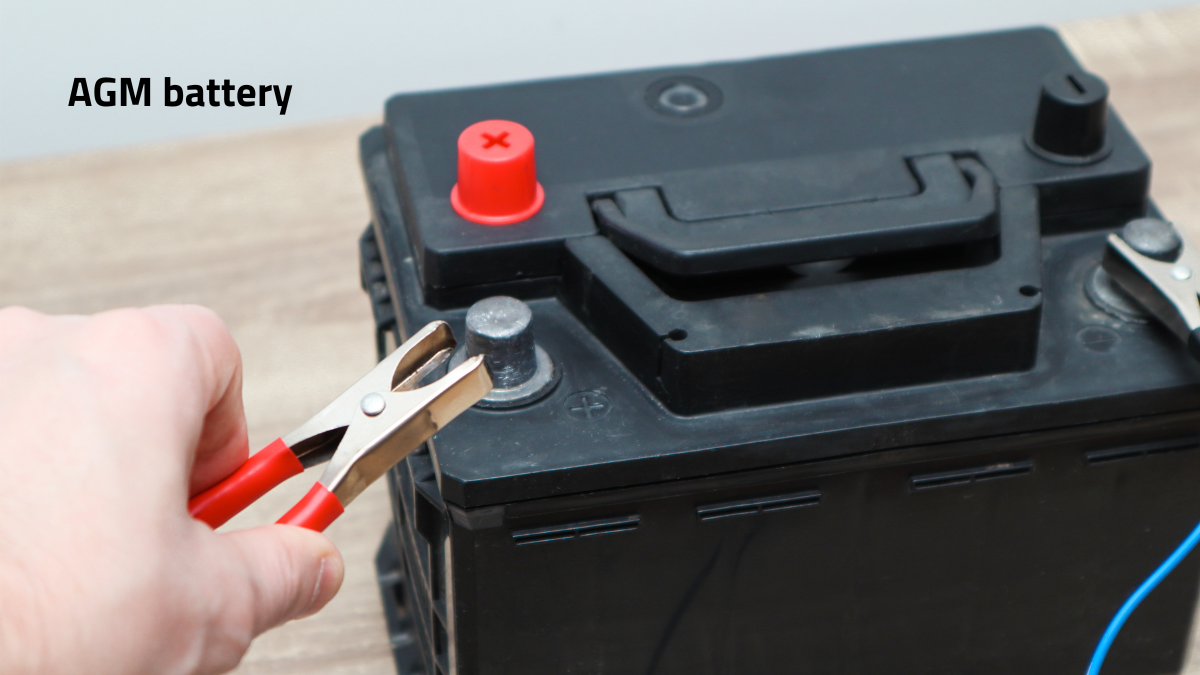What Does A Radiator Do In A Car
Ever wondered what keeps your car engine cool and running smoothly even on those scorching summer days? Meet the unsung hero of your car’s engine bay – the radiator. The radiator plays a crucial role in maintaining your vehicle’s temperature, ensuring your engine doesn’t overheat. But what does a radiator actually do in a car? Let’s dive into the world of radiators and uncover their importance in your vehicle’s performance.
What Does A Radiator Do In A Car?
Table of Contents
ToggleWhat is a Radiator?
The Basic Function of a Radiator
At its core, a radiator is a heat exchanger. It transfers the excess heat from the engine to the air, preventing the engine from overheating. Essentially, the radiator helps keep your car’s engine at an optimal temperature, allowing it to perform efficiently without the risk of damage from excessive heat.
How a Radiator Fits into the Cooling System
The radiator is a key component of the car’s cooling system, which also includes the thermostat, water pump, coolant, hoses, and fans. This system works in harmony to manage the engine’s temperature, ensuring it stays within a safe operating range.
Cooling System Overview
Components of the Cooling System
- Radiator: The primary component for heat exchange.
- Thermostat: Regulates the engine temperature by controlling coolant flow.
- Water Pump: Circulates the coolant throughout the engine.
- Coolant: A fluid that absorbs heat and carries it away from the engine.
- Hoses: Transport coolant between the engine and the radiator.
- Fans: Aid in cooling the radiator by drawing air through it.
How the Cooling System Works
The cooling system operates by circulating coolant through the engine and the radiator. As the engine runs, it generates heat. The coolant absorbs this heat and carries it to the radiator, where it is dissipated into the air, helped by the radiator’s fans. This cycle continues, keeping the engine at a stable temperature.
The Anatomy of a Car Radiator
Key Parts of a Radiator
- Core: The central part where heat exchange occurs, consisting of tubes and fins.
- Inlet/Outlet Tanks: Reservoirs for coolant entering and exiting the radiator.
- Cap: Maintains the system’s pressure, allowing for the expansion and contraction of the coolant.
- Fan: Helps in drawing air through the radiator to cool the coolant faster.
Types of Radiators
- Crossflow Radiators: Coolant flows horizontally across the radiator core.
- Downflow Radiators: Coolant flows vertically, usually found in older vehicles.
- Single Pass Radiators: Coolant passes through the core once.
- Dual Pass Radiators: Coolant passes through the core twice for better cooling efficiency.
How Does a Radiator Work?
What Does A Radiator Do In A Car?
The Heat Exchange Process
When the coolant heated by the engine flows into the radiator, it passes through the thin tubes and fins of the core. As air flows over these fins (thanks to the fan), it dissipates the heat from the coolant into the air outside. This cooled coolant is then recirculated back into the engine to absorb more heat.
The Role of Coolant in the Radiator
What Does A Radiator Do In A Car?
Coolant is a specially formulated liquid that prevents the engine from freezing in cold temperatures and overheating in hot conditions. It usually contains a mix of water and antifreeze (ethylene glycol or propylene glycol) that improves its thermal properties.
Signs of a Faulty Radiator
Overheating Engine
One of the most obvious signs of a radiator problem is an overheating engine. If the temperature gauge on your dashboard frequently moves into the red zone, your radiator might not be effectively cooling the engine.
Coolant Leaks
Coolant leaks can indicate a problem with the radiator or the hoses connected to it. You might notice puddles of green, yellow, or pink fluid under your car, which is a telltale sign of a coolant leak.
Unusual Noises
A failing radiator can sometimes produce strange noises, such as clanking or hissing, due to loose parts or air trapped within the system.
Common Radiator Problems
Blockages and Clogging
Radiators can become clogged with dirt, debris, or sediment over time, reducing their efficiency. This can prevent coolant from flowing freely and cause the engine to overheat.
Radiator Corrosion
Corrosion is another common issue, particularly in older radiators. It can cause the metal parts of the radiator to deteriorate, leading to leaks and reduced cooling capacity.
Radiator Fan Issues
The radiator fan plays a crucial role in pulling air through the radiator. If the fan is faulty or not working properly, the radiator won’t be able to cool the coolant effectively, leading to overheating.
Maintenance Tips for Your Car Radiator
Regular Coolant Checks
Check your coolant level regularly and top it up if necessary. Also, ensure that the coolant is clean and not contaminated with rust or debris.
Flushing the Radiator
A radiator flush involves draining the old coolant, cleaning the system with a special solution, and refilling it with fresh coolant. This helps remove any buildup of sediment or rust inside the radiator.
Inspecting for Leaks and Damage
Regularly inspect your radiator and the surrounding hoses for any signs of leaks, cracks, or damage. Early detection can save you from more costly repairs down the line.
Radiator Repair vs. Replacement
When to Repair Your Radiator
Minor issues such as small leaks or blockages can often be repaired without replacing the entire radiator. If the damage is localized and the radiator is relatively new, repair might be a cost-effective solution.
When to Replace Your Radiator
If the radiator is severely corroded, has major leaks, or is over a decade old, replacement might be the best option. A new radiator will ensure better performance and longevity.
Choosing the Right Radiator for Your Car
Factors to Consider
- Compatibility: Ensure the radiator is compatible with your car’s make and model.
- Material: Aluminum radiators are lightweight and offer good cooling, while copper-brass radiators are more durable.
- Cooling Capacity: Consider the radiator’s ability to cool the engine, especially if you drive in hot climates or tow heavy loads.
OEM vs. Aftermarket Radiators
- OEM (Original Equipment Manufacturer): These radiators are made by the same manufacturer as your car and are designed to fit perfectly.
- Aftermarket: These are produced by third-party companies and can offer various performance enhancements. However, compatibility should be verified.
The Importance of Radiator Fluid (Coolant)
Types of Coolants
- Inorganic Additive Technology (IAT): Typically green, used in older vehicles.
- Organic Acid Technology (OAT): Common in modern cars, usually orange or red.
- Hybrid Organic Acid Technology (HOAT): Combines the benefits of IAT and OAT, typically yellow.
How to Choose the Right Coolant
Always refer to your vehicle’s manual for the recommended coolant type. Using the correct coolant ensures optimal performance and longevity of the cooling system.
How to Flush Your Car Radiator
Step-by-Step Guide to Flushing a Radiator
- Preparation: Gather your tools and coolant, and place a drain pan under the radiator.
- Drain the Old Coolant: Open the drain valve and let the old coolant flow out.
- Flush the Radiator: Fill the radiator with a flushing solution or distilled water and let it circulate.
- Drain and Refill: Drain the flushing solution and refill the radiator with fresh coolant.
Tools Needed for the Job
- Drain pan
- Flushing solution or distilled water
- New coolant
- Wrenches and pliers
Environmental Impact of Radiator Coolants
Eco-Friendly Coolants
Eco-friendly coolants are biodegradable and non-toxic, reducing their environmental impact. These coolants are increasingly available and can be a good choice for environmentally conscious drivers.
Proper Disposal of Used Coolant
Used coolant should never be poured down the drain or onto the ground. Take it to a recycling center or an automotive shop that offers coolant disposal services.
This was the full Information on What Does A Radiator Do In A Car?
FAQs about Car Radiators
1. How do I know if my radiator is bad?
- Signs include engine overheating, coolant leaks, unusual noises, or a drop in coolant levels.
2. Can a car run without a radiator?
- No, without a radiator, the engine will overheat quickly, causing serious damage.
3. How much does it cost to change the radiator?
- Replacing a radiator typically costs between $300 and $900, including parts and labor.
4. What is the purpose of a car radiator?
- The radiator cools the engine by dissipating heat from the coolant into the air, preventing overheating.
5. Can you drive a car with a bad radiator?
- Driving with a bad radiator is risky and can lead to engine damage due to overheating.
6. How do I know if my car needs a new radiator?
- Persistent overheating, significant leaks, or corrosion are signs that you may need a new radiator.
7. Are radiators worth fixing?
- Minor issues like small leaks can be fixed, but severe damage usually requires replacement.
8. Is changing radiators a big job?
- It’s a moderately complex task that typically takes a few hours, best handled by a professional.
9. What is the average lifespan of a radiator?
- A radiator typically lasts 8 to 10 years, depending on maintenance and driving conditions.
10. How often should I check my radiator?
It’s a good practice to check your radiator and coolant level at least once a month, or more frequently if you notice any issues.
11. Can I drive with a leaking radiator?
Driving with a leaking radiator is risky and can lead to engine overheating. It’s best to address the leak promptly to avoid serious damage.
12. What happens if my radiator runs dry?
If your radiator runs dry, your engine will overheat quickly, potentially causing severe damage. Always ensure your coolant level is adequate.
13. How do I know if my radiator is clogged?
Signs of a clogged radiator include engine overheating, a low coolant level despite no leaks, and reduced heater performance.
14. What’s the best way to clean a radiator?
Flushing the radiator with a proper cleaning solution is the most effective way to clean it. This removes any debris or buildup that could impair its function.
Conclusion
Now you know What Does A Radiator Do In A Car? The radiator is an indispensable component of your car’s cooling system, ensuring your engine runs smoothly by regulating its temperature. Regular maintenance and prompt attention to any signs of trouble can keep your radiator functioning efficiently, helping you avoid costly repairs and keeping your vehicle in top shape. Understanding how your radiator works and how to care for it empowers you to enjoy a reliable and long-lasting driving experience.
This was the whole article on What Does A Radiator Do In A Car?
I hope you liked it.
Read more:
Best Company to Recycle Scrap Lead Acid Batteries
Best Company to Recycle Scrap Lead Acid Batteries Recycling lead acid batteries isn’t just a good idea; it’s essential. These batteries, commonly used in cars, trucks, and backup power systems, contain toxic lead and sulfuric acid, which can be hazardous … Read more
AGM Battery | Ultimate Guide to Absorbent Glass Mat Batteries
AGM Battery: The Ultimate Guide to Absorbent Glass Mat Batteries Batteries power a myriad of devices and vehicles in our daily lives, from cars to solar systems. Among the various types of batteries available today, Absorbent Glass Mat (AGM) batteries … Read more
Brake Pads and Rotors | Full Comprehensive Guide (2024)
Brake Pads and Rotors: A Comprehensive Guide Introduction In terms of the vehicle, few parts are more important for your safety and performance than the brake pads and rotors. All these vital parts work together to stop your car, and … Read more
Brake Pads | Types, Working, Cost, Installation | Full Detail
Everything You Need to Know About Brake Pads Brake pads are more than just an essential part of your vehicle; they are the unsung heroes that keep you safe by allowing your car to stop efficiently. Whether you’re hearing unfamiliar … Read more
Chrysler Hemi Engine | Full Guide
Chrysler Hemi Engine Introduction When it comes to great American engines, the Chrysler Hemi engine stands out as a masterpiece of automobile engineering. The Hemi engine, famous for its tremendous performance and distinctive design, has made an everlasting influence on … Read more
Scissor Car Lift | Full Guide
What is a Scissor Car Lift? A scissor car lift is a type of vehicle raising device that employs a set of interlocking metal supports in the shape of a scissor mechanism. When the lift is activated, the scissor arms … Read more
Carli Suspension | Full Guide
The Ultimate Guide to Carli Suspension Introduction Off-road excursions and high-performance driving both rely heavily on your vehicle’s suspension system. Carli Suspension is a prominent name in the suspension industry. But what exactly is Carli Suspension, and why is it … Read more
Cosco Car Seat | The Ultimate Guide
The Ultimate Guide to Cosco Car Seats When it comes to the safety and comfort of your child while traveling, a reliable car seat is non-negotiable. Enter Cosco car seats—a brand that has been synonymous with affordability, reliability, and quality … Read more
Auto Parts Store
Auto Parts Stores Auto parts stores are vital for all vehicle owners since they provide access to a diverse selection of components required for repairs and maintenance. Whether you’re a DIY enthusiast or a professional mechanic, choosing the appropriate components … Read more
Fuel Injectors | Working | Types | Cost | Testing | Full Guide
Introduction to Fuel Injectors Fuel injectors are integral to your car’s fuel system, responsible for delivering fuel directly into the combustion chamber in precise amounts. This precise delivery is crucial for optimal engine performance, fuel efficiency, and emissions control. How … Read more











3 thoughts on “What Does A Radiator Do In A Car? Complete Guide 2024”